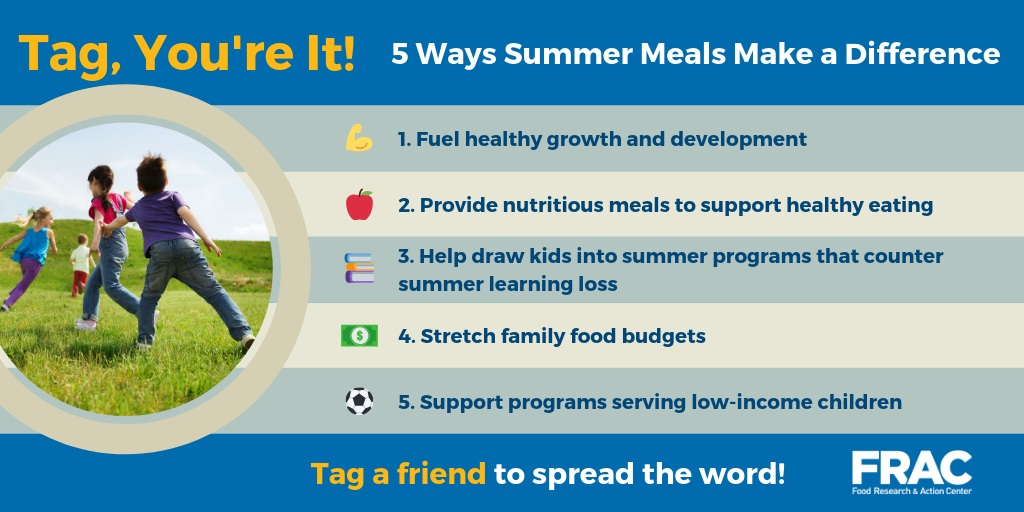California Children Need the Child Nutrition Reauthorization Bill
July 10, 2019
Our Food Bank Network is Here to Help — Find Food and Resources

Despite the enormous work by food banks and local partners across the state, California is losing ground in the fight against summer hunger. According to the newly released “Hunger Doesn’t Take a Vacation: Summer Nutrition Status Report” from the Food Research & Action Center (FRAC), 413,455 California children received a summer lunch on an average weekday in July 2018, a 6.7 percent decrease from July 2017. Only about 1 in 5 children who received a subsidized school meal were able to access Summer Meals.
Summer Nutrition Programs are crucial for ensuring children from low-income families can access healthy meals, educational programming, and other opportunities for enrichment during the summer months. Food insecurity and program inaccessibility take a toll on children, culminating in preventable lapses in academic achievement.
In California, healthy free summer meals are provided at local sites such as schools, recreation centers, libraries, YMCAs, Boys & Girls Clubs, churches, and parks for children ages 18 and under. At CAFB, we are committed to increasing the number of children served by Summer Nutrition Programs and eliminating barriers to participation.
The Child Nutrition Reauthorization bill, currently being considered by Congress, provides an important opportunity to increase participation in summer meals. We are advocating for the inclusion of provisions in the reauthorization to:
Nationally, 2.9 million children, or only 1 in 7 of the low-income children who participated in school lunch during the 2017–2018 school year, received a summer lunch on an average weekday in July 2018. If California had accomplished FRAC’s ambitious, but achievable, goal of reaching 40 children through the Summer Nutrition Programs for every 100 receiving free or reduced-price lunch during the 2017–2018 school year, an additional 544,221 children would have been fed each day and California would have collected an additional $44,086,000 in child nutrition funding in July 2018.
Our food banks see first-hand how hunger impacts children and families over the summer months, and our members have a track record of working with their community partners to increase access to the Summer Nutrition Programs. In order to best support our membership, CAFB is committed to advocating for pragmatic policy solutions to support these programs and feed more kids.
Together, by implementing a multifaceted strategy involving federal, state, and local investments, we can make strides toward ending hunger in California.